|
-
 quatrac tires quatrac tires
I am not sure if its because I am used to rock hard truck tires but why do these feels so soft on sidewalls?
air pressure is at 16psi in front and 22(still playing with it) in the back but both just feel so soft even compared to kendas, I think.
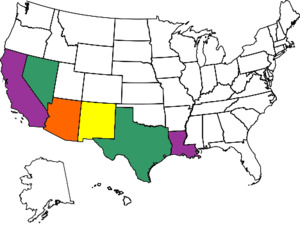 6 states down 42 states to go 
-
Very Active Member


 Originally Posted by aka1004

I am not sure if its because I am used to rock hard truck tires but why do these feels so soft on sidewalls?
air pressure is at 16psi in front and 22(still playing with it) in the back but both just feel so soft even compared to kendas, I think.
The Quatrac 5 is sort of an anomaly for auto tires ….. They are rated at 900 lb. max. load , most auto tires this size are from 1200 lbs. to 1450 lbs. …. so at 22psi they will look too soft …………. However what they LOOK like isn't want matters …. it's how they that counts ….. most folks here with that tire are using 16 psi fronts and 17-18 psi ……rear ….. they all have said this psi works no matter what load you put on them ( ie heavy folks or with a pass. or towing a trailer ……….. Mike  ……..Also give this some consideration " A tire is just as much a part of the suspension system as the " spring & shock " are …. Hard tires will always give you a Harsh ride, no matter what else the suspension is. …… ……..Also give this some consideration " A tire is just as much a part of the suspension system as the " spring & shock " are …. Hard tires will always give you a Harsh ride, no matter what else the suspension is. ……
-
Active Member
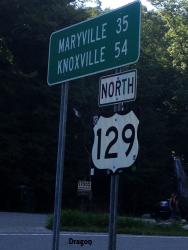

I just put a set of these on the frt last week and I put 17psi in them.They do look bulgey but seem to ride real nice,although I haven't gotten time to do much of long run yet.
   : 
: 2017 RTL ORBITAL BLUE
-

Yea. They look and feel fat and soft 
 Originally Posted by spyder01

I just put a set of these on the frt last week and I put 17psi in them.They do look bulgey but seem to ride real nice,although I haven't gotten time to do much of long run yet.
 6 states down 42 states to go 
-
Very Active Member

-
Ozzie Ozzie Ozzie
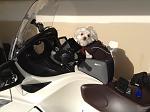

 Originally Posted by aka1004

I am not sure if its because I am used to rock hard truck tires but why do these feels so soft on sidewalls?
air pressure is at 16psi in front and 22(still playing with it) in the back but both just feel so soft even compared to kendas, I think.
All radial tires tend to 'look' a little flat at the optimal pressure they require for carrying the load placed upon them, and if they don't look a little flat & bulgy at the sides in comparison to heavy duty truck tires or any bias ply tire, chances are they've been well over-inflated!! But like Mike (Blueknight911) wrote, you really can't go by the way a radial tire looks, and it'll probably even 'feel' a bit soft & spongy if inflated 'correctly'! 
Radial tires need to look (& feel!) like that because of the way they are designed, having softer sidewalls with radial plies that help to keep more of the tread surface in the contact patch area actually ON the road while the tire rolls along, twisting & squirming as you drive, corner, accelerate, & stop etc! The Quatrac tires do that even more so than many other radials because they are designed to keep even more of the rubber blocks that make up the tread surface actually ON the road than many other tires. PLUS there's their design intention to make all those little cuts & sipes you can see in their tread's surface flex & 'grab' onto the road surface as the tire rolls, with the blocks acting like little gripping fingers that hang on tight while the flexing of the rubber makes the 'gaps' formed by the cuts & sipes work as little pumps to push out any cushioning air, water, or even snow/ice! This is especially so at the leading & trailing edges of the contact patch - and the Quatrac tires have a bunch more of those little cuts & sipes that need to 'work' a bit as they roll onto the road's surface, keep working as they form the contact patch, then finally flexing even more to add to the whole gripping & pumping effect! And the 'rubber compound' of the tread is intentionally designed & intended to, amongst other things, help make all this gripping & flexing & pumping work even better at keeping you safe!! 
Besides, if you pumped a radial tire up hard enough so that the sidewalls didn't 'look' bulgy, then yeah, you might get an easier roll (less contact patch area means less grip, traction, & easier roll) possibly even a 'more direct' or 'precise' feel in the steering (at low to middling speeds!) you might even get marginally better fuel economy if you drive/ride to maximise that (over-inflation is just one of the tools used on those ultra-economy runs!) but you'll also be making the tire significantly more prone to internal damage, your ride will be a lot harsher than intended by the tire's design, AND you'll be adversely affecting steering, traction, & grip, especially at higher speeds, thru stopping the tires & their specially designed tread pattern & compounds from working to their best as designed to keep you & your ride safe!! 
When it comes to radial tires looking & feeling 'bulgy' &/or under-inflated, appearances & feel ARE deceiving - you NEED to use a tire pressure gauge to check for the correct pressure in them, the correct pressure will be lower than in a similar sized heavy wall/truck/bias or cross ply tire, and the Quatracs especially are MEANT to look a little bulgy & feel/ride a little softer at their correct pressure for whatever load they are carrying! 
Last edited by Peter Aawen; 08-16-2019 at 07:09 PM.
2013 RT Ltd Pearl White
Ryde More, Worry Less!
-
Very Active Member

-
Active Member
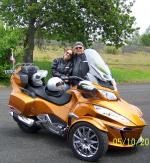
 Ray & Marci
Tenino, WA
2014RTL Cognac
ALWAYS ride 2 up.
-

 Originally Posted by aka1004

I am not sure if its because I am used to rock hard truck tires but why do these feels so soft on sidewalls?
air pressure is at 16psi in front and 22(still playing with it) in the back but both just feel so soft even compared to kendas, I think.
I'm not wishing to start a fight but I almost totally disagree with both of the contributors to this thread so far, both in tyre loading and how a tread pattern works. An essential understanding to bear in mind is that the tyre does not support the vehicle, the air within the tyre supports the vehicle loads, both static and dynamic loads. The fact that a tyre is rated to a particular load doesn't necessarily mean it can be run with less air pressure. The stated tyre load is the load it can carry at its maximum rated tyre pressure - if the tyre pressure is low the tyre's load bearing is also low.
It is true that the radial construction techniques combined with modern materials allow a radial tyre wall to be more flexible than a cross ply or bias ply tyre but that should not be taken as an excuse for underinflation. Underinflation is the enemy of a tyre and generates excess heat, it degrades the tyre rubber, prevents the tyre operating as its designers intended and can lead to total tyre failure if left unchecked.
Though the tyre walls of a radial ply tyre are a little more flexible, the tread is not and, almost exclusively nowadays, the tread is reinforced with steel belts to support it, even the much maligned Kenda tyres are steel belted radial tyres. Generally the object of this rigidity is to keep the tyre firmly supported to allow the tread block pattern to behave as designed. If the tyre is underinflated, as well as heat generated by the over flexing sidewalls, the tread is not properly supported and the blocks will squirm under load with negative affect on tyre performance in a number of ways.
While comfort is important, do not under inflate a tyre to achieve a comfort level.
-

No doubt these are better way better than Kenda its just little funny that it reminds me of fat baby. 
I’m going on a 2000 mile round trip so I will be trying out different psi.
Thank you for the info.
 6 states down 42 states to go 
-
Very Active Member


 Originally Posted by PinkRosePetal

I'm not wishing to start a fight but I almost totally disagree with both of the contributors to this thread so far, both in tyre loading and how a tread pattern works. An essential understanding to bear in mind is that the tyre does not support the vehicle, the air within the tyre supports the vehicle loads, both static and dynamic loads. The fact that a tyre is rated to a particular load doesn't necessarily mean it can be run with less air pressure. The stated tyre load is the load it can carry at its maximum rated tyre pressure - if the tyre pressure is low the tyre's load bearing is also low.
It is true that the radial construction techniques combined with modern materials allow a radial tyre wall to be more flexible than a cross ply or bias ply tyre but that should not be taken as an excuse for underinflation. Underinflation is the enemy of a tyre and generates excess heat, it degrades the tyre rubber, prevents the tyre operating as its designers intended and can lead to total tyre failure if left unchecked.
Though the tyre walls of a radial ply tyre are a little more flexible, the tread is not and, almost exclusively nowadays, the tread is reinforced with steel belts to support it, even the much maligned Kenda tyres are steel belted radial tyres. Generally the object of this rigidity is to keep the tyre firmly supported to allow the tread block pattern to behave as designed. If the tyre is underinflated, as well as heat generated by the over flexing sidewalls, the tread is not properly supported and the blocks will squirm under load with negative affect on tyre performance in a number of ways.
While comfort is important, do not under inflate a tyre to achieve a comfort level.
PRP, we are ALL entitled to an opinion. …. Some are valid and some are not …. the ones that are not can get someone injured or worse … I know Peter's credentials concerning His knowledge of tires , and I have stated mine many. many times ….. I would love to hear how much professional Schooling you have received concerning Tires and how much Court testimony you have given … ???? …. Thanks …. Mike 
-
Very Active Member
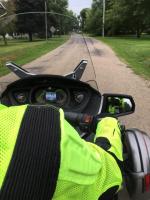

Yeah, I thought my Quatrac 5 tires were kind of soft and/or squishy for the first 10 miles of so. Then I became aware of how much better everything felt!
The handling and the ride were so much better that I'm still in awe after 1500 miles with them on. I ride 60 miles each day to work plus all the "fun" riding we can squeeze in. I haven't had a chance to ride in the rain yet but that's not from lack of trying. Well, there was one day they were calling for severe storms (that never happened) and my wife said not to ride the Spyder.
I'm running 16 PSI front and 18 PSI rear and that's riding single or two up. My wife and I combined don't make 300 lbs, so not a heavy load.
One other thing. The Kenda inflation recommendation is about 16 PSI +/- 2 lbs on a tire that is not nearly as well constructed as any other tire out there, with the possible exception of Arachnids.
On the road again...........and forever young!
2013 RT-S SE 5

Yesterday is a cancelled check.
Tomorrow is a promissory note.
Today is cash.......spend it wisely.
-
Ozzie Ozzie Ozzie


PRP, I've written elsewhere (often, and even at some length!  ) about tire pressures & how it's the air inside the tire that carries the load; I've outlined some of the simpler aids that ryders can use to help match their tire pressure to the load that their tire's are actually carrying rather than either doing all the measuring & calculations to get it right or blindly following the tire's max load info (don't laugh, I've seen it done, even on lightweight Spyders running car tires! ) about tire pressures & how it's the air inside the tire that carries the load; I've outlined some of the simpler aids that ryders can use to help match their tire pressure to the load that their tire's are actually carrying rather than either doing all the measuring & calculations to get it right or blindly following the tire's max load info (don't laugh, I've seen it done, even on lightweight Spyders running car tires!  ) or even using the vehicle's tire placard info when they are riding on a significantly different tire to that described on the placard, and I'm pretty sure that you could find at least some of that if you tried. But since the OP was in the 'reasonable pressure range for load' on the car tires he's running, I chose to avoid taking the thread off topic to repeat what's been said here over & over, while still trying to explain why the APPEARANCE of a radial tire seeming to have low pressure because the sidewalls are 'bulging' has no real bearing on the pressure that's inside the tire, even when it's running the optimal pressure for the load its carrying. ) or even using the vehicle's tire placard info when they are riding on a significantly different tire to that described on the placard, and I'm pretty sure that you could find at least some of that if you tried. But since the OP was in the 'reasonable pressure range for load' on the car tires he's running, I chose to avoid taking the thread off topic to repeat what's been said here over & over, while still trying to explain why the APPEARANCE of a radial tire seeming to have low pressure because the sidewalls are 'bulging' has no real bearing on the pressure that's inside the tire, even when it's running the optimal pressure for the load its carrying.
And without suggesting people ignore the recommendations about the Kendas (which are light enough to warrant those pressures & unreliable enough to make it important to stick fairly close the their recommended pressures!) that Appearance thing is the unarguable point I was trying to make & explain as to why - you simply cannot safely use the appearance of the sidewalls on a radial tire to judge if it's running at correct or otherwise pressure! Relying solely on the APPEARANCE of the tire sidewall to determine their correct pressure is extremely likely to result in tire damage, traction, handling issues, &/or even accidents. Rather, you should always use a reliably constant air pressure gauge - cos reading the same pressure for the same given pressure every time is much more important than being exactly accurate every now & then! 
All the other stuff you can search for & look up if you like. 
Last edited by Peter Aawen; 08-17-2019 at 08:02 AM.
2013 RT Ltd Pearl White
Ryde More, Worry Less!
-

 Originally Posted by BLUEKNIGHT911

PRP, we are ALL entitled to an opinion. …. Some are valid and some are not …. the ones that are not can get someone injured or worse … I know Peter's credentials concerning His knowledge of tires , and I have stated mine many. many times ….. I would love to hear how much professional Schooling you have received concerning Tires and how much Court testimony you have given … ???? …. Thanks …. Mike 
Mike, let's not go down this road again of comparing levels of expertise. I find her articulate and well-reasoned argument quite interesting and compelling, regardless of her background in tire technology.
2014 RTL Platinum

-

Ride with whatever pressures suit your style... on my 1200 RT my factory kendras [yuk] .. felt a bit squidgy and could feel sidewall roll on corners.. my happy medium is 21 in the fronts and 28 in the rear...suits me and my riding style.
-
Active Member


Ill defer to a true expert on tires even though ive sold and installed thousands of tires in my business.I will run 17 up frt on my new quatracs and they will bulge a little more than the Kendas did.When I get gas I will feel each tire to see if its anything other than just warm,just like Ive done on every vehicle I ever owned.
   : 
: 2017 RTL ORBITAL BLUE
-
Very Active Member
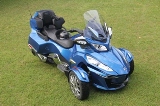

I'm no rocket scientist, but did stay at that hotel brand they say makes you smarter for half a night. I tried all the known methods to determine the correct inflation pressures of these tires. the 4 PSI rule (I never got 4 PSI increase, even at 14 PSI fronts), talking with tire carcass engineers (load charts aren't readily available for this class tire, generic load charts aren't conclusive to me), etc.
My opinion (mine only) is the 2 known testing mediums for if any tire is at proper inflation for the load being carried is a tire pyrometer used correctly and the good old wet tire footprint test (with the load on the tire).
As an addendum to this, you must absolutely know the load each tire is carrying. The Quatrac 5 is rated for 908 LBS each on the front, 1356 Lbs for the rear. You will not need maximum sidewall inflation to carry each corner of the Spyders weight.
Last edited by h0gr1der; 08-17-2019 at 08:24 AM.
Reason: Omission
h0gr1der
2018 RT Limited Blue/Chrome SE6 *Tri-Axis Bars*Adjustable Driver Backrest*175/55R15 Vredestein Front, 205/60R15 Vredestein Rear Tires*Baja Ron Front Spring Pre-Load Adjusters*Misty Mountain Sheepskin seat cover*Centramatic balancers *Garmin Zumo 595LM GPS*KOTT Grills*BajaRon swaybar*SpyderPops Alignment*Missing Belt guard*Magnetic Mirrors*Custom Rear Adjustable Shock*360° LED Headlights & Foglights*Progressive front fender turn signals
States Visited on Less than 4 wheels.

 Posting Permissions
Posting Permissions
- You may not post new threads
- You may not post replies
- You may not post attachments
- You may not edit your posts
-
Forum Rules
|

